
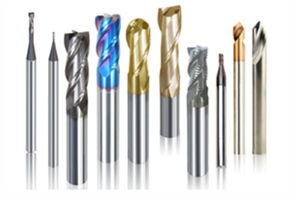
Correct surface treatment of small circular tools can improve tool life, reduce machining cycle time and improve machining surface quality. However, choosing the right cutting tool coating can be a confusing and laborious task.
Each coating has both advantages and disadvantages in the cutting process, if you choose the wrong coating, it may lead to tool life less than the uncoated tool, and sometimes even lead to more problems after coating.
There are many alternate tool coatings including PVD coatings, CVD coatings, and composite coatings alternately coated with PVD and CVD, which can be easily obtained from tool manufacturers or coating suppliers.
Here will briefly introduce some common properties of tool coatings and some common choices of PVD and CVD coatings. Each of the properties of the coating plays an important role in determining which coating is most beneficial to the cutting process.
Hardness
The high surface hardness of the coating is one of the best way to improve tool life. Generally, the higher the hardness of the material or surface, the longer the tool life will be.
Titanium nitride (TiCN) coating has a higher hardness than titanium nitride (TiN) coating. The increased carbon content increases the hardness of TiCN coatings by 33%, with the hardness varying from approximately Hv3000 ~ 4000(depending on the manufacturer).
The application of CVD diamond coating with surface hardness up to Hv9000 in cutting tools has been relatively mature. Compared with PVD coated cutting tools, the service life of CVD diamond coated cutting tools is increased by 10 ~ 20 times. The high hardness and cutting speed of diamond coated tools are 2 ~ 3 times better than that of uncoated tools, making them a good choice for non-ferrous materials.
Wear Resistance
Wear resistance refers to the ability of a coating to resist wear and tear. Although some of the workpiece material itself may not be too hard, the elements added in the production process and the process used may cause the cutting edge of the tool to crack or blunt.
Surface Lubricity
The high friction coefficient will increase the cutting heat and lead to the shortening or even failure of the coating life. Reducing friction coefficient can greatly extend tool life. A smooth or regular coated surface helps to reduce cutting heat because a smooth surface reduces heat generation by allowing chips to slide quickly away from the front edge of the cutting surface. Compared with uncoated tools, coated tools with better surface lubrication can also be processed at a higher cutting speed, so as to further avoid high-temperature fusion welding with the workpiece material.
Oxidizing Temperature
The oxidation temperature is the temperature at which the coating begins to decompose. The higher the oxidation temperature is, the more favorable it is for cutting under high temperature conditions. Although TiAlN coatings may have a lower hardness at room temperature than TiCN coatings, they have proved to be much more effective in high-temperature processing than TiCN coatings. The TiAlN coating retains its hardness at high temperatures because it forms a layer of aluminum oxide between the cutter and the chip, which transfers heat from the cutter to the workpiece or the chip. The cutting speed of cemented carbide tools is usually higher than that of HSS tools, which makes TiAlN the preferred coating for cemented carbide tools. This PVD TiAlN coating is commonly used for cemented carbide drills and end mills.
Adhensive Resistance
The adhesive resistance of the coating can prevent or reduce the chemical reaction between the tool and the processed material, and prevent the workpiece material from depositing on the tool.
In the processing of non-ferrous metals (such as aluminum, brass, etc.), BUE will often occur on the tool, resulting in the cutting tool collapse or workpiece size out of order. Once the processed material begins to adhere to the tool, the adhesion expands.
When the aluminum workpiece is processed with the forming tap, the aluminum adhesive on the tap will increase after each hole is processed, and finally the tap diameter becomes too large, resulting in the workpiece size out of tolerance. Coatings with good bond resistance can work well even when the coolant is of poor performance or low concentration.
Frequently-used Coatings
1. Titanium nitride coating (TiN)
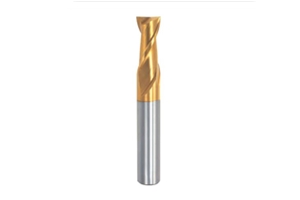
2. Titanium nitride coating (TiCN)
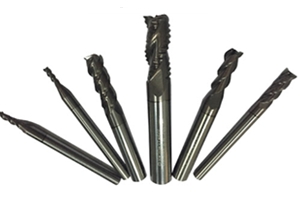
3. Aluminium nitride or aluminium nitride coating (TiAlN/AlTiN)
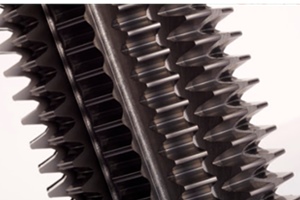
4. Nitrogen chromium aluminium coating (AlCrN)
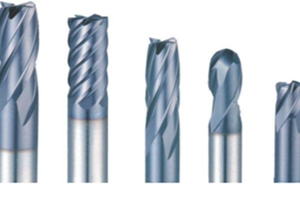
5. Diamond coating(Diamond)
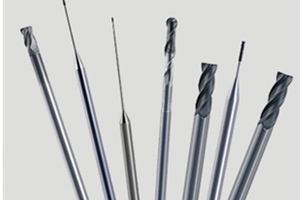
CVD diamond coatings for non-ferrous metal material processing cutting tool provides the best performance, the processing of graphite, metal matrix composites (MMC), high silicon aluminum alloy, and many other high abrasion material, the ideal coating (note: pure diamond coated tools cannot be used for processing steel, because processing steel will produce a large number of cutting heat, and causing a chemical reaction, ruined the adhesive layer between the coating and cutting tool).
6. Homo Oxidation coating (Homo)
Homo oxidation coating (Homo) heats the tool in water vapor at 500 ~ 550 ℃ for 30 ~ 60 minutes to generate Fe3O4 layer on the surface of the tool, which is an oxidation treatment method. The thickness of the oxide film ranges from 1 ~ 3. Because the film is porous, it can hold the cutting oil and reduce the heat of friction. It is very effective for the hard cutting materials, high tensile steel, stainless steel, cast iron and so on.
The coatings used for hard milling, tapping and drilling are different and have their own specific applications. In addition, multi-layer coatings can be used, and other coatings are embedded between the surface layer and the tool substrate, which can further improve the service life of the tool.
Successful application of coating
To achieve a cost-effective coating application may depend on many factors, but there is generally only one or several coating options available for each particular processing application.
The right choice of coating and its properties can mean the difference between a significant improvement in machining performance and little improvement. Cutting depth, cutting speed and coolant may affect the application of tool coating.
Because there are many variables in the processing of a workpiece material, one of the best ways to determine which coating to choose is through trial cutting. Coating suppliers are constantly developing new coatings to further improve the high temperature, friction and wear resistance of coatings. It is always a good thing to work with coating (tool) manufacturers to verify the application of the latest and best tool coating in processing.
Comparison of ns, ps, and fs lasers for PCD, carbide, and ceramic machining, and how Moresuperhard’s 5-axis laser PCD grinding machine delivers high-precision cold laser processing.
Learn how to choose the right PDC cutters for deep and hard rock formations. Explore diamond thickness, thermal stability, impact toughness, cutter geometry, and bit design.
Add: Zhongyuan Rd, Zhongyuan District, Zhengzhou, 450001, Henan, China
Tel: +86 17700605088